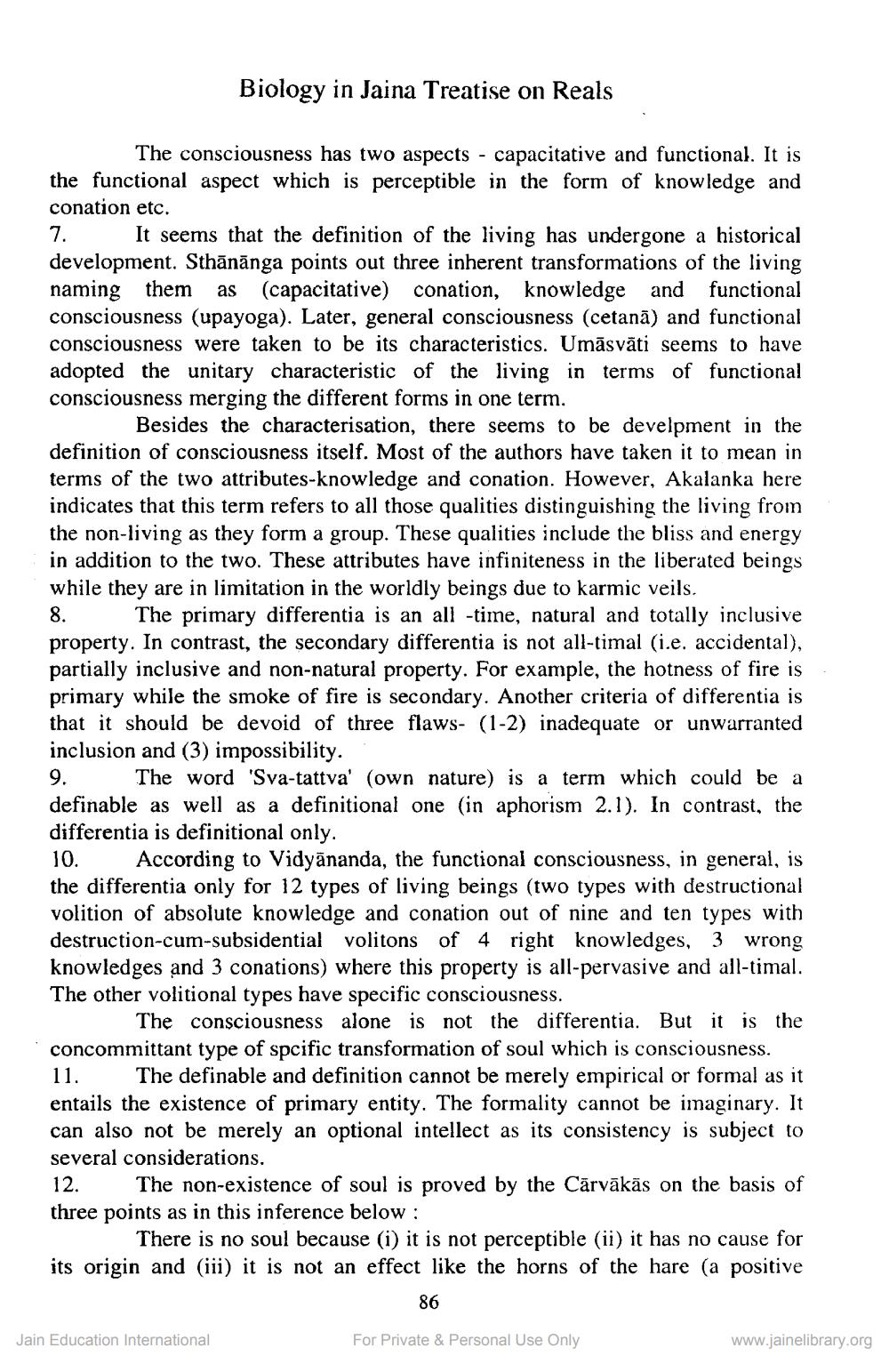________________
Biology in Jaina Treatise on Reals
The consciousness has two aspects - capacitative and functional. It is the functional aspect which is perceptible in the form of knowledge and conation etc. 7. It seems that the definition of the living has undergone a historical development. Sthānānga points out three inherent transformations of the living naming them as (capacitative) conation, knowledge and functional consciousness (upayoga). Later, general consciousness (cetanā) and functional consciousness were taken to be its characteristics. Umāsvāti seems to have adopted the unitary characteristic of the living in terms of functional consciousness merging the different forms in one term.
Besides the characterisation, there seems to be develpment in the definition of consciousness itself. Most of the authors have taken it to mean in terms of the two attributes-knowledge and conation. However, Akalanka here indicates that this term refers to all those qualities distinguishing the living from the non-living as they form a group. These qualities include the bliss and energy in addition to the two. These attributes have infiniteness in the liberated beings while they are in limitation in the worldly beings due to karmic veils. 8. The primary differentia is an all time, natural and totally inclusive property. In contrast, the secondary differentia is not all-timal (i.e. accidental), partially inclusive and non-natural property. For example, the hotness of fire is primary while the smoke of fire is secondary. Another criteria of differentia is that it should be devoid of three flaws- (1-2) inadequate or unwarranted inclusion and (3) impossibility. 9. The word 'Sva-tattva' (own nature) is a term which could be a definable as well as a definitional one (in aphorism 2.1). In contrast, the differentia is definitional only. 10. According to Vidyānanda, the functional consciousness, in general, is the differentia only for 12 types of living beings (two types with destructional volition of absolute knowledge and conation out of nine and ten types with destruction-cum-subsidential volitons of 4 right knowledges, 3 wrong knowledges and 3 conations where this property is all-pervasive and all-timal. The other volitional types have specific consciousness.
The consciousness alone is not the differentia. But it is the concommittant type of spcific transformation of soul which is consciousness. 11. The definable and definition cannot be merely empirical or formal as it entails the existence of primary entity. The formality cannot be imaginary. It
n also not be merely an optional intellect as its consistency is subject to several considerations. 12. The non-existence of soul is proved by the Cārvākās on the basis of three points as in this inference below:
There is no soul because (i) it is not perceptible (ii) it has no cause for its origin and (iii) it is not an effect like the horns of the hare (a positive
86
Jain Education International
For Private & Personal Use Only
www.jainelibrary.org




